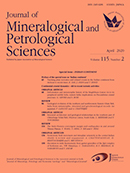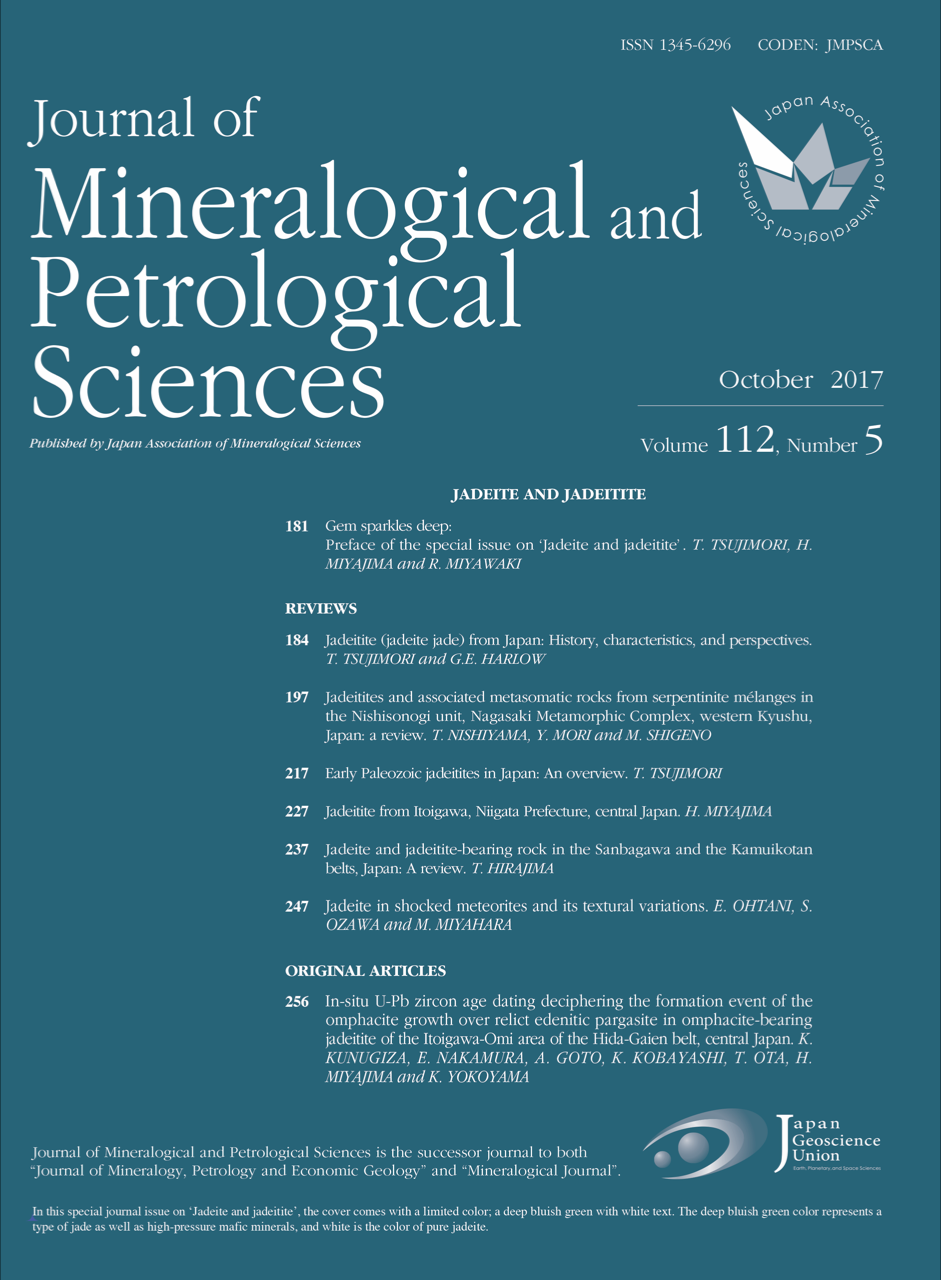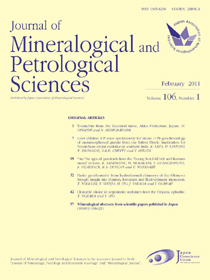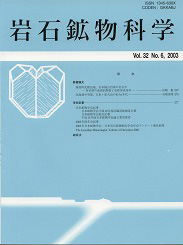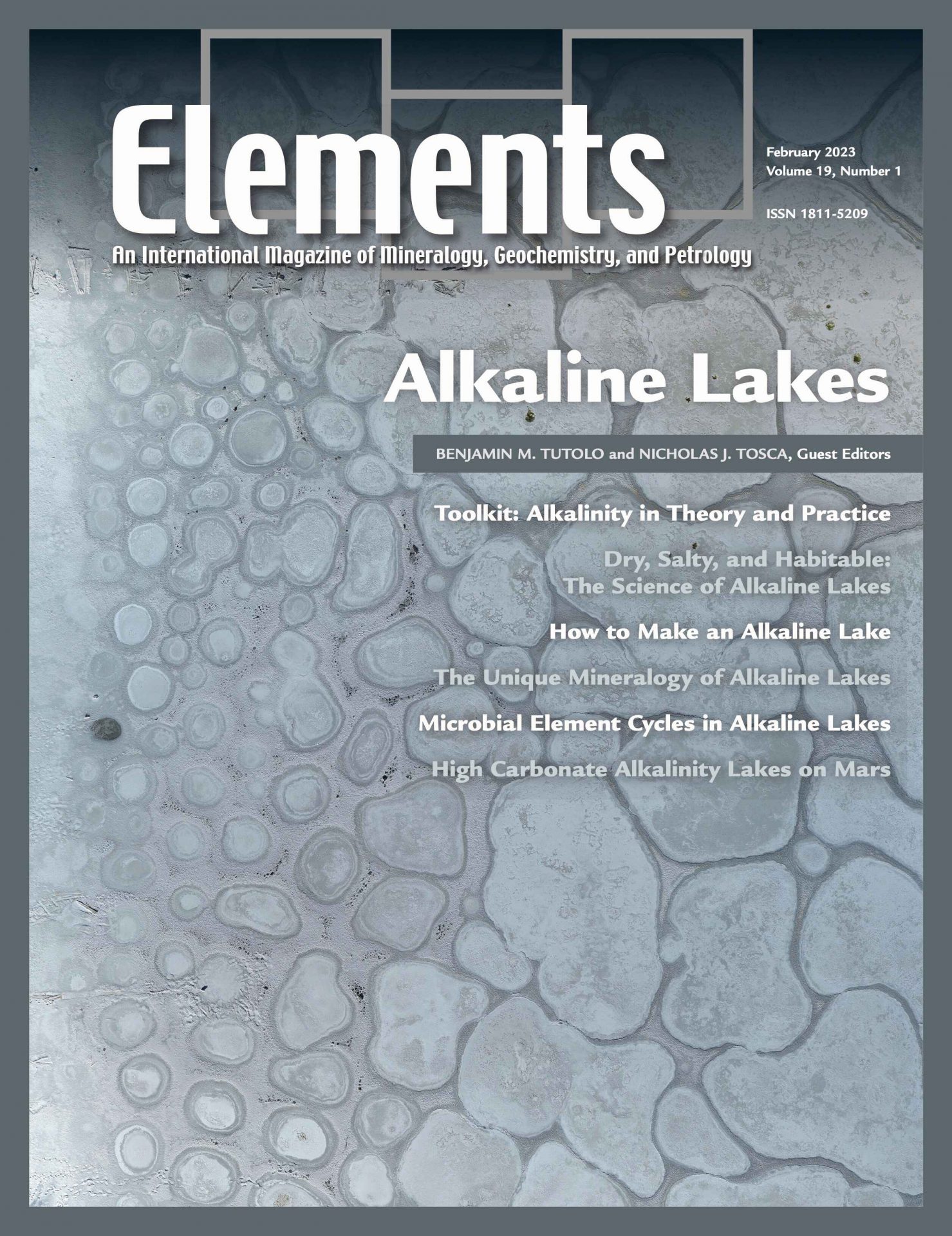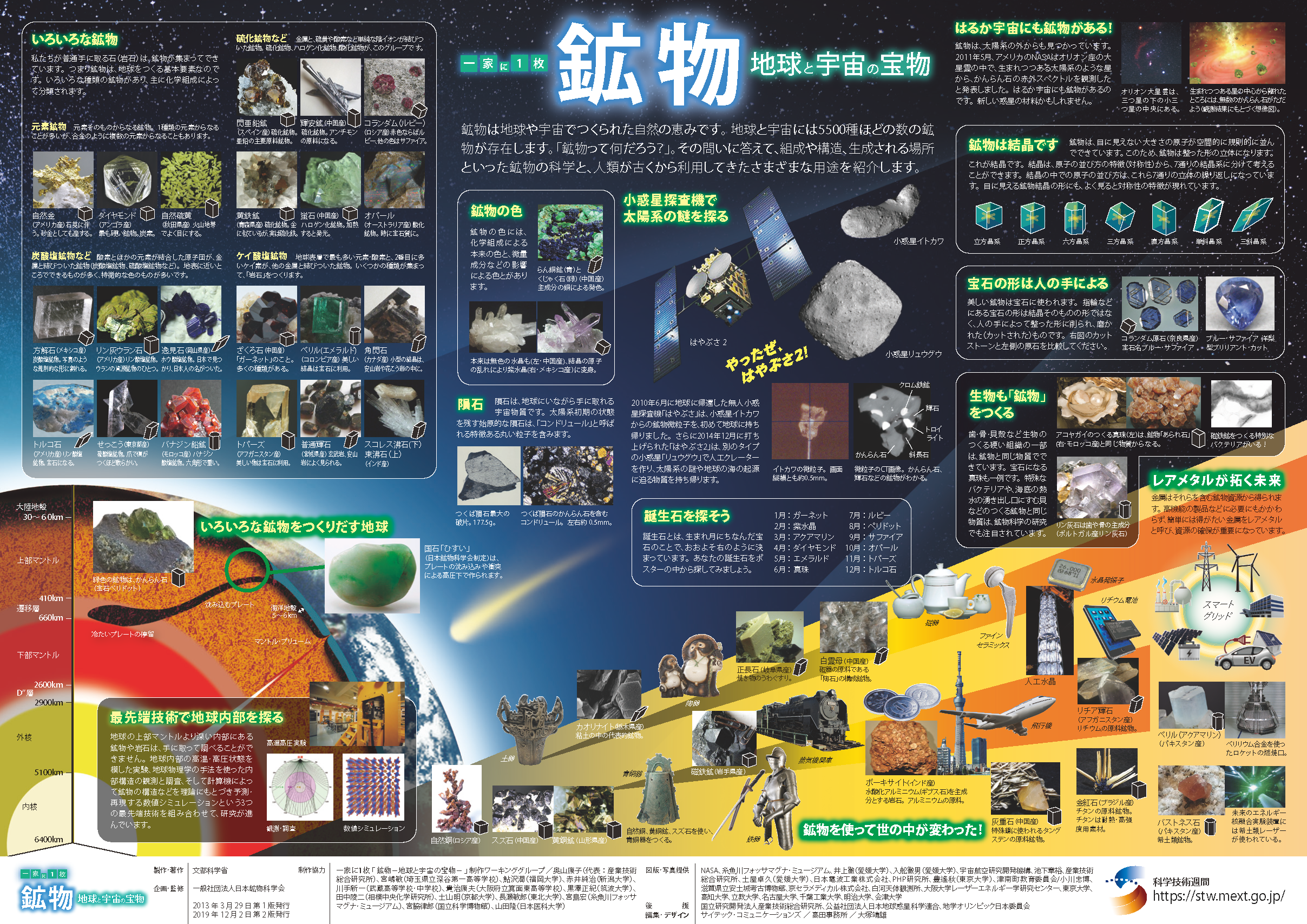|
|
 Henmilite is a hydrous borate found from Fuka deposit, Okayama
Prefecture, Japan (Nakai et al., 1986, AM vol.71). This mineral was
named for Drs. Kitinosuke Henmi and Chiyoko Henmi, Okayama
University. The picture is from Takada et al. (2005, GKK vol. 34,
252-260).
Henmilite is a hydrous borate found from Fuka deposit, Okayama
Prefecture, Japan (Nakai et al., 1986, AM vol.71). This mineral was
named for Drs. Kitinosuke Henmi and Chiyoko Henmi, Okayama
University. The picture is from Takada et al. (2005, GKK vol. 34,
252-260).
 Momoiite crystal from the Fujii mine, Fukui Prefecture. This
mineral was reported by Tanaka et al. (2010, JMPS vol.105 92-96), as
a new Mn- and V-dominant garnet from three localities in Japan: the
Kurase mine (Ehime Prefecture), the Hokkejino mine (Kyoto
Prefecture) and the Fujii mine. The name is in honor of Professor
Hitoshi Momoi (1930-2002).
Momoiite crystal from the Fujii mine, Fukui Prefecture. This
mineral was reported by Tanaka et al. (2010, JMPS vol.105 92-96), as
a new Mn- and V-dominant garnet from three localities in Japan: the
Kurase mine (Ehime Prefecture), the Hokkejino mine (Kyoto
Prefecture) and the Fujii mine. The name is in honor of Professor
Hitoshi Momoi (1930-2002).
 Ehimeite (IMA2011-023)(JMPS 107, 1-7) is the first Cr-dominant
amphibole species which found from Higashi-Akaishi Mountain, Ehime
Prefecture, Japan. Ehimeite is named after the locality, Ehime*.*
The name changed to "chromio-pargasite" by new amphibole
nomenclature in 2012.
Ehimeite (IMA2011-023)(JMPS 107, 1-7) is the first Cr-dominant
amphibole species which found from Higashi-Akaishi Mountain, Ehime
Prefecture, Japan. Ehimeite is named after the locality, Ehime*.*
The name changed to "chromio-pargasite" by new amphibole
nomenclature in 2012.
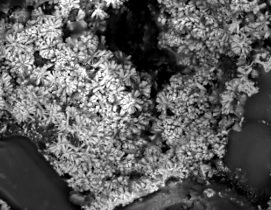 Rhabdophane-(Y) occurs in a small druse in an alkali olivine basalt
at Hinodematsu, Genkai-cho, Saga Prefecture. This mineral was
reported by Takai and Uehara (2012, JMPS vol. 107, 110-113), as a
new mineral of Y-dominant rhabdophane group.
Rhabdophane-(Y) occurs in a small druse in an alkali olivine basalt
at Hinodematsu, Genkai-cho, Saga Prefecture. This mineral was
reported by Takai and Uehara (2012, JMPS vol. 107, 110-113), as a
new mineral of Y-dominant rhabdophane group.
 The type specimen of tanohataite from Tanohata mine, Iwate
Prefecture, Japan (Nagase et al., 2012 JMPS vol. 107, 149–154).
Tanohataite is a new mineral of wollastonite group. The ideal
formula is LiMn2Si3O8(OH), which
corresponds to Li-analogue of cerandite. FOV 28mm.
The type specimen of tanohataite from Tanohata mine, Iwate
Prefecture, Japan (Nagase et al., 2012 JMPS vol. 107, 149–154).
Tanohataite is a new mineral of wollastonite group. The ideal
formula is LiMn2Si3O8(OH), which
corresponds to Li-analogue of cerandite. FOV 28mm.
|
Updated
May 11, 2023
|
 Henmilite is a hydrous borate found from Fuka deposit, Okayama
Prefecture, Japan (Nakai et al., 1986, AM vol.71). This mineral was
named for Drs. Kitinosuke Henmi and Chiyoko Henmi, Okayama
University. The picture is from Takada et al. (2005, GKK vol. 34,
252-260).
Henmilite is a hydrous borate found from Fuka deposit, Okayama
Prefecture, Japan (Nakai et al., 1986, AM vol.71). This mineral was
named for Drs. Kitinosuke Henmi and Chiyoko Henmi, Okayama
University. The picture is from Takada et al. (2005, GKK vol. 34,
252-260).
 Momoiite crystal from the Fujii mine, Fukui Prefecture. This
mineral was reported by Tanaka et al. (2010, JMPS vol.105 92-96), as
a new Mn- and V-dominant garnet from three localities in Japan: the
Kurase mine (Ehime Prefecture), the Hokkejino mine (Kyoto
Prefecture) and the Fujii mine. The name is in honor of Professor
Hitoshi Momoi (1930-2002).
Momoiite crystal from the Fujii mine, Fukui Prefecture. This
mineral was reported by Tanaka et al. (2010, JMPS vol.105 92-96), as
a new Mn- and V-dominant garnet from three localities in Japan: the
Kurase mine (Ehime Prefecture), the Hokkejino mine (Kyoto
Prefecture) and the Fujii mine. The name is in honor of Professor
Hitoshi Momoi (1930-2002).
 Ehimeite (IMA2011-023)(JMPS 107, 1-7) is the first Cr-dominant
amphibole species which found from Higashi-Akaishi Mountain, Ehime
Prefecture, Japan. Ehimeite is named after the locality, Ehime*.*
The name changed to "chromio-pargasite" by new amphibole
nomenclature in 2012.
Ehimeite (IMA2011-023)(JMPS 107, 1-7) is the first Cr-dominant
amphibole species which found from Higashi-Akaishi Mountain, Ehime
Prefecture, Japan. Ehimeite is named after the locality, Ehime*.*
The name changed to "chromio-pargasite" by new amphibole
nomenclature in 2012.


